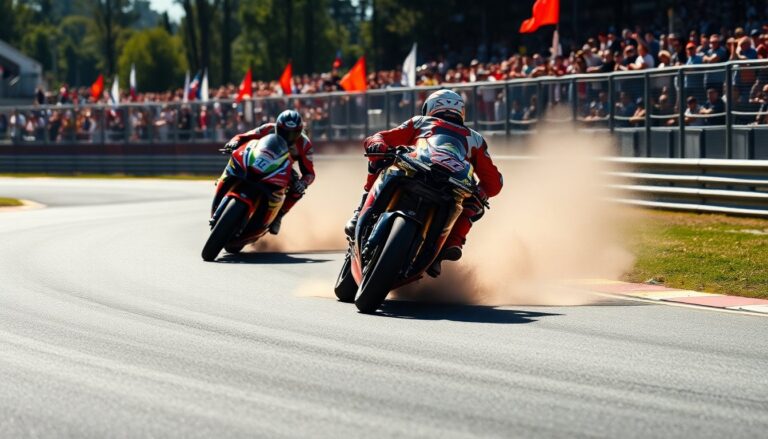Argomenti trattati
The allure of MotoGP
The MotoGP series transcends traditional racing. It is a captivating event that merges speed, precision, and innovative technology. Each season, enthusiasts across the globe are drawn in by the powerful roar of engines and the stunning agility displayed by elite riders. As the highest level of motorcycle road racing, MotoGP epitomizes the peak of two-wheeled competition, where exceptional athletes consistently challenge the boundaries of their machines and their own physical limits.
The evolution of MotoGP: From humble beginnings to global phenomenon
Founded in 1949, MotoGP has transformed significantly over the decades. Initially, the championship featured various motorcycle classes, showcasing the industry’s innovation. As the sport grew, the Fédération Internationale de Motocyclisme (FIM) standardized the rules, establishing a more organized competition. A critical turning point came with the introduction of four-stroke engines, which improved both performance and sustainability. This evolution reflects not only advancements in motorcycle technology but also the increasing global appeal of the sport.
The technology behind the bikes
Modern MotoGP machines represent the pinnacle of engineering innovation. These motorcycles feature advanced aerodynamics, electronics, and specialized tires, enabling them to reach astonishing speeds exceeding 350 km/h (217 mph). Riders depend on traction control, anti-wheelie systems, and cornering ABS to effectively manage power and grip on the track. The use of data analytics has become vital, as teams gather telemetry data to optimize performance and inform strategic decisions during races.
The design of these bikes prioritizes drag reduction and stability enhancement, ensuring they are not only fast but also remarkably agile. Each team allocates millions to research and development efforts to secure a competitive advantage, continually pushing the limits of what is achievable in motorcycle racing.
The riders: masters of the craft
At the core of MotoGP are the riders, often hailed as elite athletes. The physical and mental challenges of racing at such high speeds are substantial. Riders require exceptional strength, endurance, and reflexes to withstand the forces acting on their bodies. They consistently push their limits, honing the skills necessary for precise cornering and braking.
The role of strategy in racing
Speed is vital, but strategy is equally important in MotoGP. Teams meticulously analyze track conditions, tire wear, and fuel consumption to develop effective race strategies. The selection of tire compounds can significantly influence race results, and teams must remain agile in response to shifting weather conditions and opponents’ tactics. Pit stops are also crucial, as every second matters when deciding to change tires or make bike adjustments.
Psychological factors significantly influence riders as they navigate the intense pressures of competition. Maintaining focus and the ability to adapt to the race dynamics often determine the difference between victory and defeat.
The global impact of MotoGP
MotoGP transcends traditional sports, evolving into a cultural phenomenon. With races hosted across the globe—from Europe to Asia and the Americas—the series attracts millions of fans and generates substantial economic benefits for host cities. It fosters a sense of community among fans, who frequently travel great distances to support their favorite riders and teams.
Additionally, MotoGP plays a vital role in promoting safety and technological advancements in motorcycle design. Innovations developed on the racetrack often translate into enhanced safety features and performance improvements in consumer motorcycles.
The future of MotoGP is poised for exciting developments as the sport integrates advanced technologies and enhances fan experiences. The growing enthusiasm for motorsports suggests that MotoGP will continue to engage and inspire new generations of fans.

